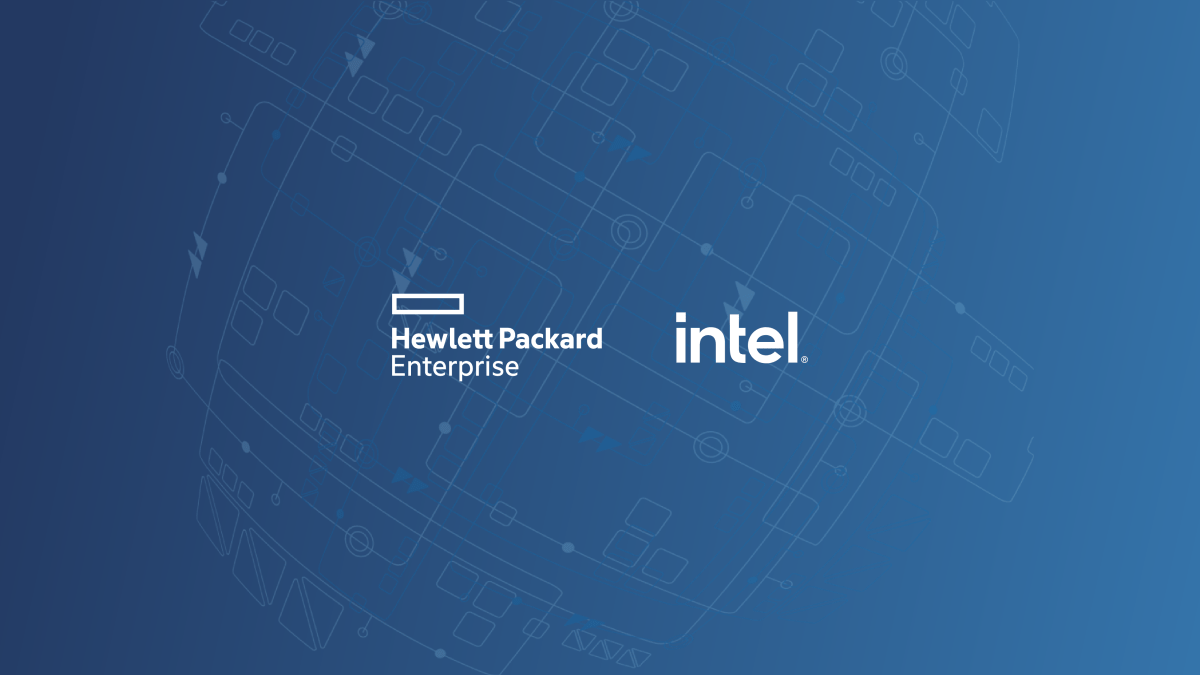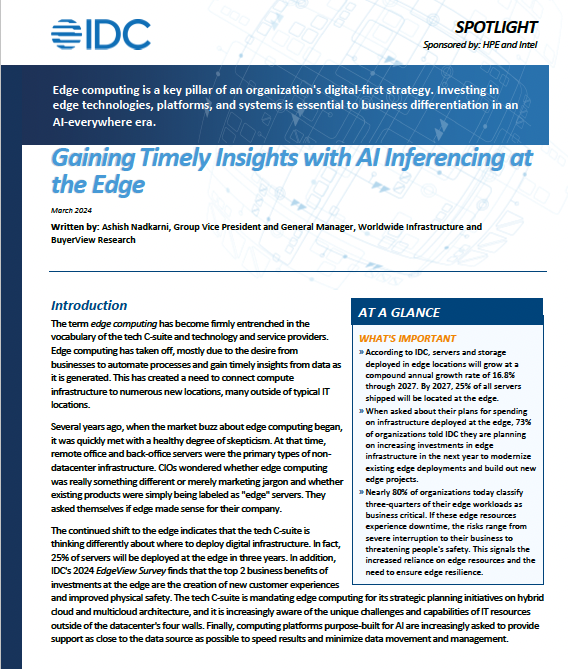- Sponsored
- Insights
Why combining edge computing and AI is crucial for resiliency and innovation

As enterprises increasingly rely on real-time data processing and automation, edge computing has become vital to modern IT infrastructure. Nearly 80% of organizations now classify three-quarters of their edge workloads as business-critical, according to recent research published by International Data Corporation (IDC), a global market intelligence, data and events provider.
According to a new IDC report, that growth is turbocharging business outcomes. However, it also raises the stakes for developing better AI inferencing at the network edge to ensure operational resiliency, efficiency and security.
Key factors driving edge computing adoption
The growth of edge computing is fueled by several factors, according to the IDC report.

- Latency and bandwidth sensitivity: Applications like autonomous vehicles and smart manufacturing require near-instantaneous data processing, which demands low-latency and high-bandwidth capabilities. Edge computing enables this by processing data closer to the source, reducing delays when transmitting data to a centralized data center.
- Connectivity challenges: Intermittent connectivity can pose significant operational risks for mobile equipment and devices or those in remote locations. Edge computing mitigates these risks by allowing local data processing, ensuring continuous operations even in areas with limited connectivity.
- Cost and scalability: As data generation increases, so do the costs of transmitting information to central data stores. Edge computing reduces these costs by processing data locally. In addition, edge computing supports scalability, allowing organizations to manage the influx of data without overwhelming existing infrastructure.
- Security and compliance: Localized data processing at the edge enhances security by minimizing exposure to external threats. Additionally, edge computing helps businesses comply with data regulations by keeping sensitive data within local jurisdictions.
Edge computing increasingly depends on the integration of AI capabilities, however, to enable enterprises to perform real-time inferencing on data generated at the edge. This reduces the need to transmit large data sets to centralized locations, enhancing decision-making speed and accuracy. This is particularly crucial for industries that rely on decentralized decision-making processes.
The path forward
The report, “Gaining Timely Insights with AI Inferencing at the Edge,” advises enterprise and IT leaders to invest in fit-for-purpose edge computing platforms that complement their specific use cases. These platforms, whether enterprise-class systems or embedded-class Internet-of-Things (IoT) gateways, should be chosen based on the volume and rate of data they are expected to handle.
By adopting a hybrid cloud approach and capitalizing on modern servers, such as HPE’s ProLiant Gen11 powered by Intel Xeon Scalable processors, agencies can achieve significant benefits, including:
- Improved agility and scalability — through infrastructure as a service.
- Trusted security by design — from the edge to the data center to the cloud.
- Performance optimized for specific workloads — powering various graphics and compute use cases.
As agencies continue to invest in edge technologies, the ability to access and process data at the edge will be crucial for maintaining a competitive edge and driving growth. With the right infrastructure and strategic investments, organizations can harness the full potential of edge computing to transform their operations and customer experiences.
Download the full report, “Gaining Timely Insights with AI Inferencing at the Edge.” This article was sponsored by HPE and Intel.






